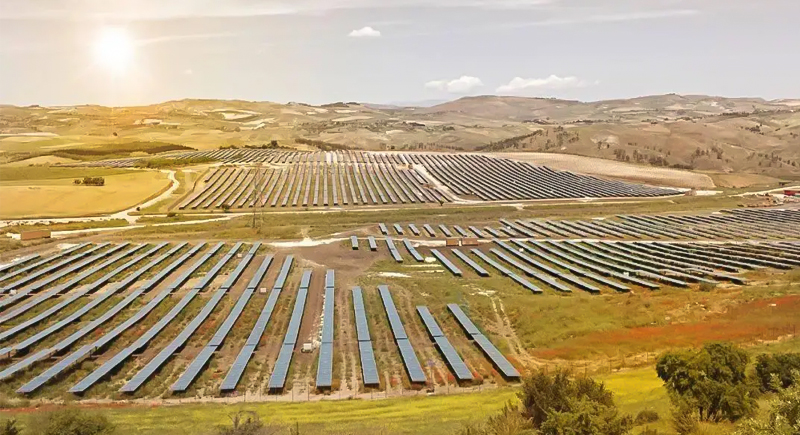VIDEO & CENTER

On 23 October, 85 projects in 18 EU member States were invited to prepare for funding. Estonia and Slovakia were invited for the first time. The projects were selected from a 2023 call for proposals and received 337 applications, of which 283 were eligible and evaluated.
For the first time, the 2023 call for proposals was awarded to projects of different sizes (large, medium and small, as well as pilot projects) with a focus on cleantech manufacturing.
This is the largest since the launch of the Innovation Fund in 2020, raising the total amount of support to €12 billion and increasing the number of projects by 70%.
Selected projects are located in 18 countries:
Belgium, Denmark, Germany, Estonia, Greece, Spain, France, Croatia, Italy, Hungary, Netherlands, Austria, Poland, Portugal, Slovakia, Finland, Sweden and Norway.
Projects cover a wide range of areas in the following categories:
Energy-intensive industries, renewable energy, energy storage, industrial carbon management, net-zero transport (including maritime and aviation) and buildings.
The selected projects will be operational by 2030 and are expected to reduce emissions by about 476 million tonnes of CO2 equivalent within the first decade of operation. This will help meet Europe's decarbonisation targets, reduce emissions from sectors that are particularly difficult to decarbonise, strengthen European industrial manufacturing capacity, and strengthen Europe's technological leadership and supply chain resilience.
Supporting industrial innovation to achieve key policy objectives
The projects selected by the EU will, in particular, contribute to the achievement of the following EU policy objectives:
Clean Tech Manufacturing:
Under the Net Zero Emissions Industries Act (NZIA), the selected clean technology projects will develop, build and operate manufacturing plants for key components for wind and solar power and heat pumps, as well as components for electrolyzers, fuel cells, energy storage technologies and battery value chains.
The selected projects will contribute 3 GW of solar PV manufacturing capacity and 9.3 GW of electrolyzer manufacturing capacity to the EU, further strengthening the EU's clean energy infrastructure.
Energy intensive industries:
The selected projects will support a variety of technologies to reduce net greenhouse gas emissions from energy-intensive industries, targeting renewable energy integration, thermal and energy storage solutions, recycling and reuse, and electrification.
Industrial carbon Management:
The projects selected in this tender will capture and contribute 13% of the New Zealand Energy Authority's target to sequester at least 50 million tonnes of CO2 per year from a variety of difficult-to-reduce sources in energy-intensive industries, such as cement and lime, (bio) refineries, chemicals and waste conversion to energy.
Green hydrogen:
The selected projects will provide 61 kilotons of RFNBO(renewable fuels of non-biological origin) per year, helping to increase the use and production of hydrogen renewable energy in applications that are difficult to reduce emissions in industry and transport.

Net zero traffic:
The project will help reduce emissions from the transport sector, with the maritime industry benefiting the most. These projects involve the construction and retrofitting of ships for RFNBO fuel and power, as well as reducing emissions in the manufacture of road transport components. The winning project will also support sustainable transport fuels, producing 525 kilotons of renewable fuel per year.
The independent expert will evaluate the selected projects based on the following five criteria:
The potential to reduce greenhouse gas emissions;
Degree of innovation;
Operational, financial and technical maturity;
Reproducibility;
Cost effective.
This time, some representative projects are attracting attention.
These include a surface PV project in Belgium, a malt industry solar thermal power plant and storage facility in Croatia, and a 1.5 GW heterojunction PV module plant in Spain, which will be developed by Trina Solar (Luxembourg) Holdings, a subsidiary of Trina Solar.
The selected applicants will sign the funding agreement in the first quarter of 2025, and the completed projects will be operational in 2030.
The European Commission said that promising but currently immature projects will also receive project development assistance from the European Investment Bank.
According to a report by energy market intelligence specialist Montel Analytics, solar generated 94 TWh of electricity in the European electricity market in the third quarter of 2024.
This is the highest number of solar power generation ever and a 15% increase over the third quarter of 2023. The largest contributors are Germany, Italy and Spain, which generate 24.8 TWh, 16.9 TWh and 9.7 TWh respectively.
In the third quarter of 2024, wind power generated the second best amount on record, totaling 104.7 TWh. Renewable energy (including solar, wind, biomass, hydropower and waste) accounted for 50.8% of total electricity generation in Europe between July and September.
The remaining generation consists of nuclear energy, which accounts for a record high 25.3% of total generation, followed by natural gas (13.4%), coal/lignite (10.2%) and oil.














